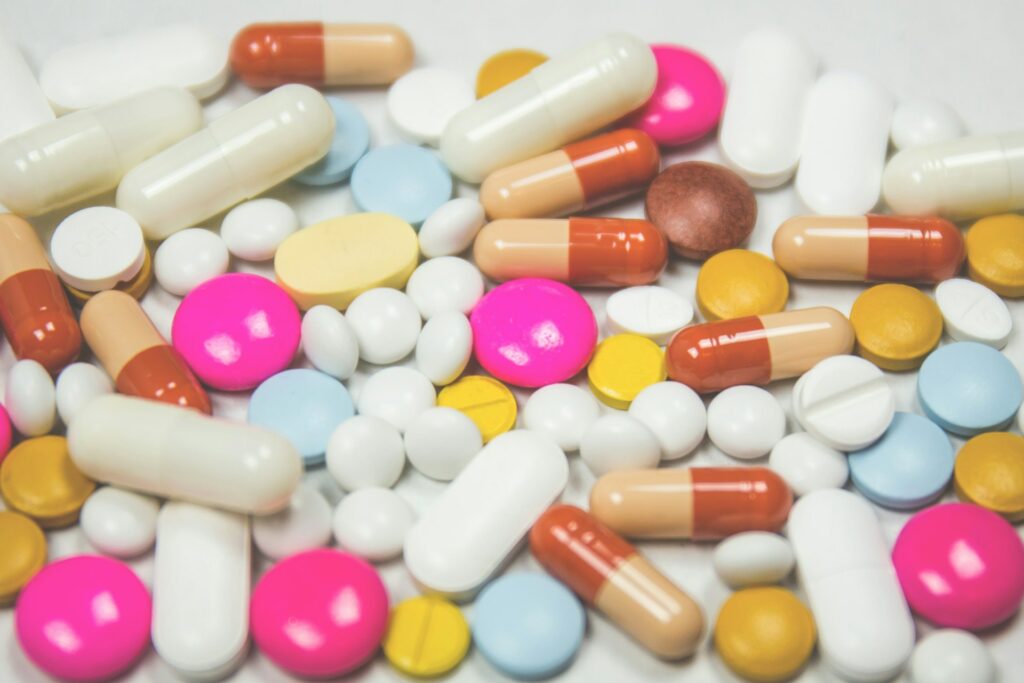The Role of Blockchain Technology in Combating Fake Medicines

The Role of Blockchain Technology in Combating Fake Medicines
Given the hyper-connected nature of the modern world, it is difficult to fathom that a single tablet could potentially do more damage than benefit. On the other hand, this is the scary reality for millions of people all around the globe. The quiet pandemic that is counterfeit pharmaceuticals, which are phony or manipulated drugs that masquerade as legitimate ones, is a problem. Fake pharmaceuticals are responsible for the deaths of hundreds of thousands of people every year, primarily in underdeveloped nations. These fake drugs include antibiotics that do not have any active components and vaccines that are polluted with potential health risks.
Controlling this underground market has been a challenge for the pharmaceutical business for a very long time. As a result of the complexity, paper-based nature, and sometimes opaque nature of traditional supply chains, it is simple for dishonest players to sneak counterfeit goods into the system without being discovered. On the other hand, blockchain technology is becoming an unexpected hero in the battle for the safety of controlled substances. Blockchain was formerly mostly recognized for its ability to power cryptocurrencies such as Bitcoin; nevertheless, it is now being welcomed by the healthcare industry for a totally different reason: its capacity to monitor and verify the legitimacy of pharmaceuticals in real time, from the laboratory to the shelf of the drugstore.
The breadth of the issue at hand
Let’s first have a better understanding of the magnitude of the problem before we go on to the answer. The World Health Organization estimates that in countries with low and intermediate incomes, as much as one out of every ten medical items is either of a poor quality or fraudulently manufactured. Among them are treatments that may save lives, such as those used to treat malaria, cancer, diabetes, and even COVID-19.
Not only are these counterfeit drugs ineffective in treating sickness, but they also contribute to the development of drug resistance, make the public’s health worse, and undermine faith in healthcare systems. what is the monetary cost? It is estimated that pharmaceutical firms, governments, and patients all suffer losses of around $200 billion annually throughout the rest of the world.
It has been shown that the conventional method, which includes the utilization of barcodes, package seals, and human audits, is too simple to manipulate. In order to meet the requirements, a system that is trustworthy, transparent, and tamper-proof is required. The blockchain technology comes into play at this point.
Can You Explain What Blockchain Is and Why It Is Important?
A decentralized database that records transactions in a manner that is safe, transparent, and unchangeable is the fundamental component of blockchain technology. Blockchain is a form of digital ledger. Once data is uploaded to a blockchain, it cannot be altered or removed without leaving a trail. This is because the blockchain is immutable.
It is thus appropriate for any circumstance in which confidence and traceability are of the utmost importance. Furthermore, this is precisely the issue that arises in the pharmaceutical supply chain: there is no simple method to confirm that the pill you are holding is the same pill that was sent out of the producer. Through the use of blockchain technology, it is possible to generate a permanent and verifiable trail for each and every medicine shipment. This helps to ensure that nothing is misplaced or exchanged along the route.
The Role of Blockchain Technology in the Supply Chain of Drugs
This is how it works in actual business: When a pharmaceutical business produces a batch of pharmaceuticals, each package or vial is given a distinct digital ID, which is then stored on the blockchain. This process is repeated after each batch of drugs has been manufactured. Handoffs are documented at each stage of the product’s journey through the supply chain, beginning with the producer and continuing via wholesalers, distributors, pharmacies, and eventually reaching the end user.
Because these entries are timestamped and encrypted, they are accessible to all users on the network but cannot be altered in any way, not even by the individuals who created them. A QR code or barcode may be scanned by anybody, from regulators to patients, to verify the whole path that the product has taken, including who handled it, when it was handled, and where it was handled.
In the event that anything goes wrong, such as a batch being recalled or discovered to be counterfeit, it is possible to easily track it back, so reducing the amount of damage that occurs and boosting accountability.
Actual-World Illustrations Currently, Exerting an Influence
Blockchain technology is no longer an idea that is considered to be futuristic. Currently, a number of businesses and governments are operating real-world pilots and platforms, including the following:
- Under the Drug Supply Chain Security Act (DSCSA) of the Food and Drug Administration (FDA), the United States-based company MediLedger is constructing a blockchain network that will allow large pharmaceutical companies such as Pfizer and Genentech to check medications.
- By using blockchain technology, PharmAccess in Kenya and Modum in Switzerland are able to monitor the transportation of medicines, so assuring their safe management and avoiding any tampering.
- A traceability system for medicines and other high-risk commodities was developed via a collaborative effort between VeChain and Walmart China. This system is available to customers through the use of simple QR scans.
- In an effort to oversee the large generic pharma business, which is both a worldwide lifeline and a key target for counterfeiters, the government of India has been conducting experiments using blockchain technology.
- The application examples shown here demonstrate that blockchain technology is not only safe, but also scalable, auditable, and adaptable to a variety of country settings and situations.
- Aside from the Benefits of Counterfeiting
Blockchain technology in the pharmaceutical industry offers a number of significant advantages, the most pressing of which is the battle against counterfeit medications.
Faster recalls: In the event that a batch is found to be defective, regulators are able to rapidly track and remove individual lots, as opposed to large-scale recalls that are inefficient.
The use of real-time tracking helps streamline logistics, minimize the amount of stock that has expired, and cut down on wasteful disposal, which results in less waste.
Enhanced data sharing: medical professionals, hospitals, and insurance companies are able to access verified drug records without jeopardizing the confidentiality of patients.
Blockchain technology may assist control interruptions and maintain equal distribution, particularly during times of crisis or pandemics. This is especially beneficial for supply chain resilience.
However, there are still issues that need to be resolved.
Obviously, there is no technology that is flawless. Before blockchain technology can be broadly utilized in the pharmaceutical industry, it must first overcome a number of key obstacles:
- Integration with legacy systems: Many current supply chains continue to depend on obsolete software or paper trails, which makes integration a difficult process.
- In terms of cost and scalability, it is possible that rural pharmacies or smaller manufacturers may not have the resources necessary to integrate new digital infrastructure.
- Data at the patient level must be kept secret, which necessitates the use of advanced encryption and access restrictions. Blockchain technology is transparent, but patient data must be kept private.
- Standardization on a global scale: Blockchain networks run the danger of becoming fragmented if they do not have uniform standards used across nations and businesses.
It is not a question of practicality; rather, they are difficulties of size and control. The technology has already shown that it is capable of functioning. From this point forward, it is necessary to construct frameworks for joint effort and make certain that the advantages are distributed to even the most vulnerable regions of the planet.
Putting Together a Healthier Future: Some Concluding Remarks
Verifiable truth is something that blockchain technology provides, which is a rare commodity in this day and age when faith in institutions and medicine is shaky. This assures that each and every pill, bottle, and syringe has a tale, a story that can be reviewed, validated, and believed.
The fight against fake medication is one of the most urgent public health conflicts of our day, despite the fact that it is almost impossible to see. By using blockchain technology, we have the ability to make that conflict more transparent, more winnable, and more equitable.
For the reason that no one, regardless of where they reside, should ever be forced to question whether or not the medication they are taking is genuine.





